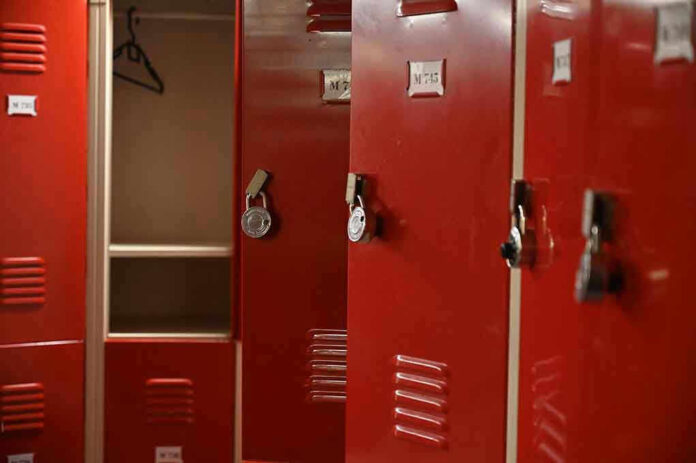America’s education system is about to get a jolt, as President Trump’s signature delivers the first-ever federal school choice program—leaving parents hopeful and teachers unions fuming, while the rest of us wonder if this is the lifeline our kids need or just another government boondoggle in disguise.
At a Glance
- President Trump signs the nation’s first federal school choice tax credit program into law on July 4, 2025.
- States can opt into the program, which offers tax credits for donations funding private school scholarships.
- Capped at $5 billion, the law aims to expand parental control but raises questions about federal oversight and public school funding.
- Critics warn of potential government overreach into private and religious education, while supporters hail a new era of educational freedom.
Trump’s Federal School Choice Law: Game-Changer or Trojan Horse?
On July 4th, President Trump inked his name on the so-called “Big, Beautiful Bill,” ushering in the first federal tax credit scholarship program for K-12 education in American history. The supporters cheered, waving flags and touting this as the long-awaited answer to failing public schools. The law allows taxpayers to claim credits for donations to certified scholarship granting organizations (SGOs), which in turn hand out scholarships for private school tuition and related expenses. If you’re a parent frustrated with the bureaucratic mess in your local school district, it sounds like a dream come true. But before we start popping the champagne, let’s not ignore the fine print and the fierce debate boiling under the surface.
States now hold the keys. Participation is strictly voluntary, meaning each state government—already divided by deep ideological fault lines—gets to decide if their families will even have access. For now, the program is capped at $5 billion, a drop in the bucket compared to the waste we see from Washington on a daily basis, but still enough to spark outrage from the usual suspects in the teachers unions and left-wing education lobbies. They claim this will gut public schools and funnel resources to the “privileged.” Meanwhile, backers point to Florida’s “Step Up for Students” program as proof that choice works—assuming government doesn’t muck it up with endless red tape.
The Battle Lines: Parents, Politicians, and the Usual Bureaucratic Suspects
Let’s break down who’s fighting for what. President Trump and congressional Republicans are pounding the table for parental rights, educational freedom, and an end to “one-size-fits-none” government schooling. The Department of Education is rolling out guidance, trying to wrangle the fifty states into at least considering the option. Scholarship granting organizations—most of them private, some religious—are lining up to get certified by the Treasury so they can start funneling private money into private schools. Meanwhile, the opposition is out in force: teachers unions, progressive education groups, and a handful of conservative voices worry that federal dollars mean federal strings, and that private and religious schools could be forced to toe the government line if they want to stay funded.
Some of the loudest critics are actually on the right. They warn that once Uncle Sam’s money gets involved, it’s only a matter of time before bureaucrats start telling private schools how to teach, who to admit, and what values to promote. International examples like Sweden and Belgium show that once school choice programs get federalized, the government’s grip on private education tightens. That’s a real concern—especially for families who’ve fled the indoctrination factories of public schools for alternatives that actually reflect their beliefs and priorities.
Winners, Losers, and What Comes Next
In the short term, families in states that opt in will see private school scholarships expand almost overnight. That’s a win for anyone desperate to escape crumbling schools and ideological indoctrination. But with the law’s $5 billion cap and state participation optional, millions of students will be left out—unless their governors and legislatures get off the fence. Public schools in those states could see funding siphoned away, sparking yet another round of political warfare over “who gets what” from the taxpayer trough.
Long-term, the stakes are even higher. If this program grows—as its supporters hope—federal influence over private and religious schools could expand right along with it. Critics warn of a future where the Department of Education uses funding as a lever to force conformity, eroding the very independence that makes alternatives to public school attractive in the first place. And the evidence on school choice’s effectiveness? It’s mixed at best. Some studies show gains, others show backsliding, and all agree that government meddling rarely leads to better outcomes for kids.
Expert Opinions, Real Risks, and the Constitutional Question
Policy analysts and education wonks are split. The American Federation for Children calls this a “historic moment,” promising to fight for even broader choice. Researchers at Michigan State and the Brookings Institution urge caution, pointing out that many voucher-like programs elsewhere have failed to deliver academic miracles—and sometimes make things worse. Some conservative leaders sound the alarm, warning that without explicit protections, federal dollars will bring federal dictates. Of course, the teachers unions and public school advocates see this as a direct attack on their monopoly and a slippery slope to “privatization.”
One thing is certain: this law will not end the war over who controls America’s classrooms. It’s only the latest skirmish in a much larger battle over parental rights, local control, and the proper role of government in our lives. For those who believe the Constitution’s Tenth Amendment actually means something, and who are tired of seeing their values steamrolled by “experts” and administrators, this could be a step in the right direction—or a Trojan Horse for more federal interference. The only certainty is that the fight for America’s schools is far from over.











